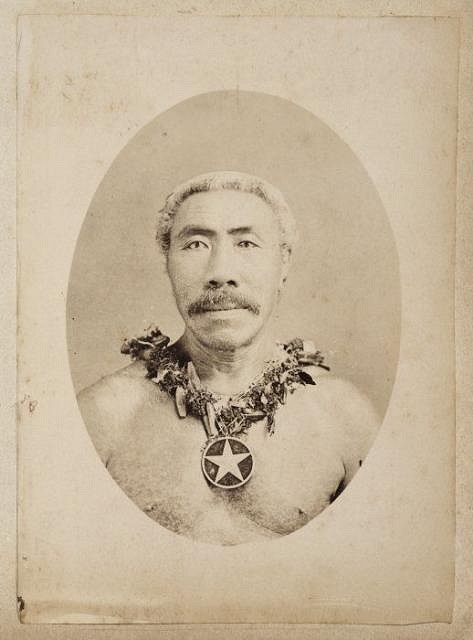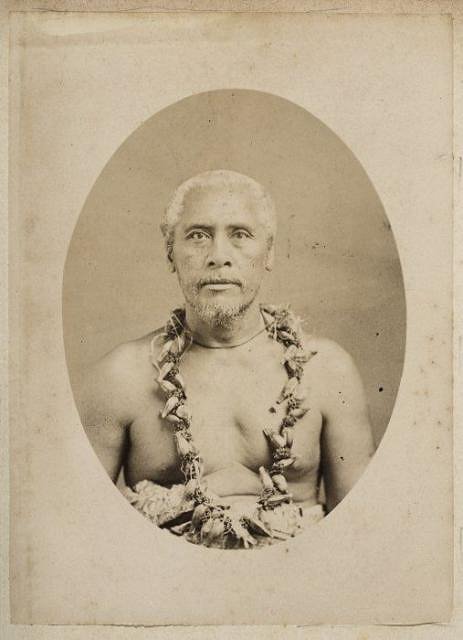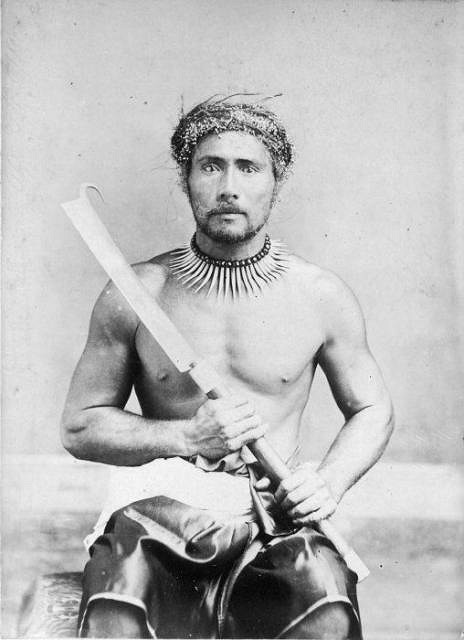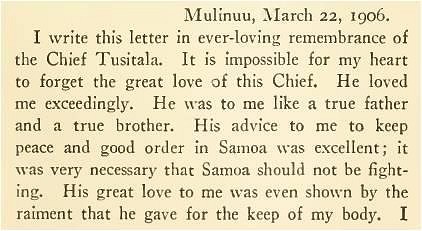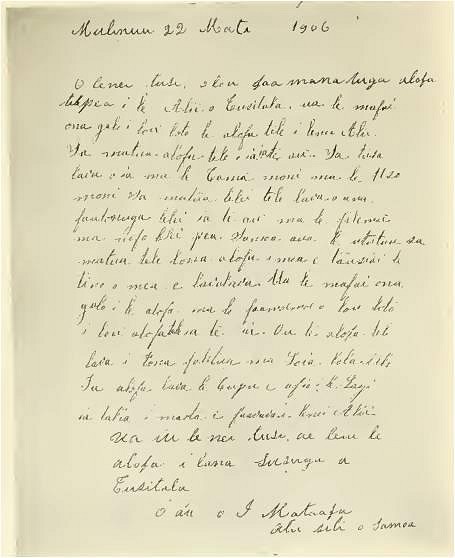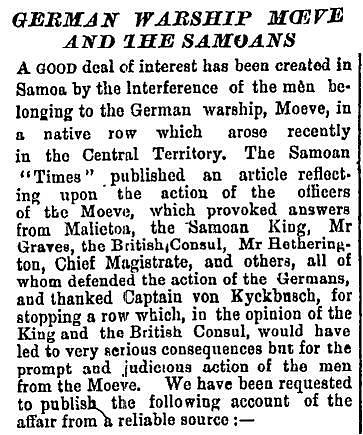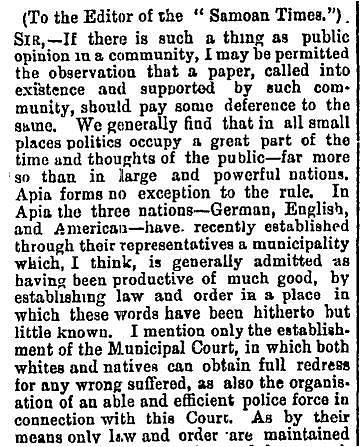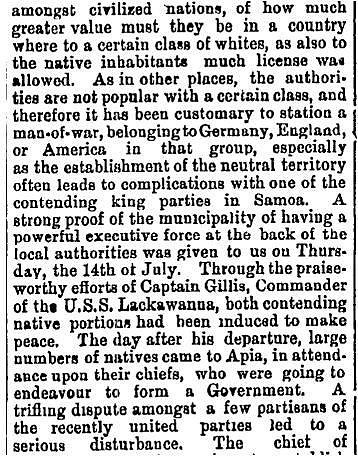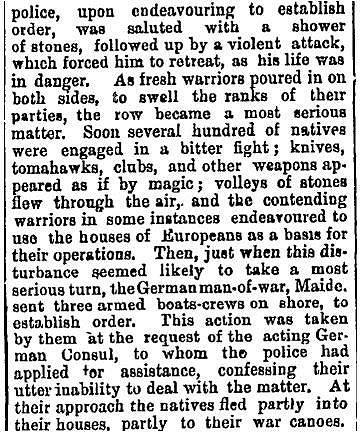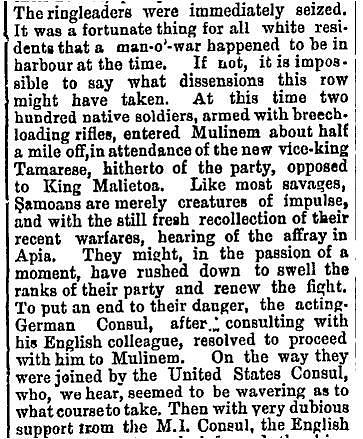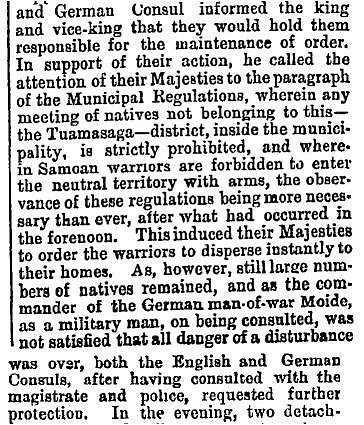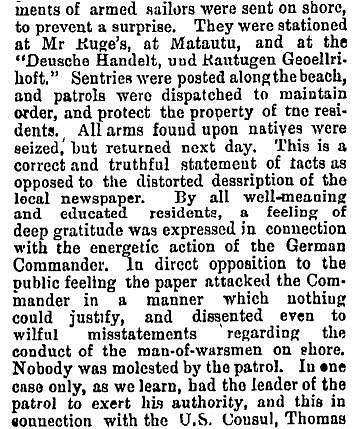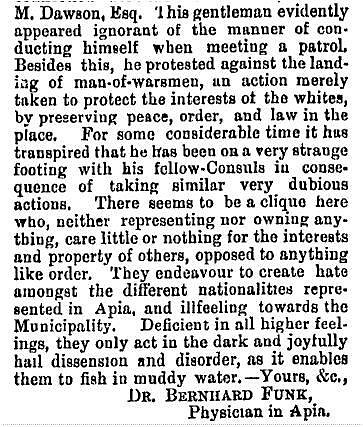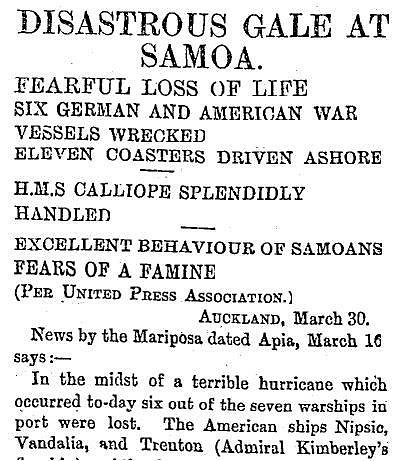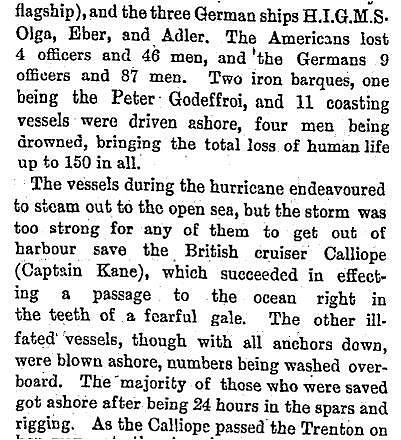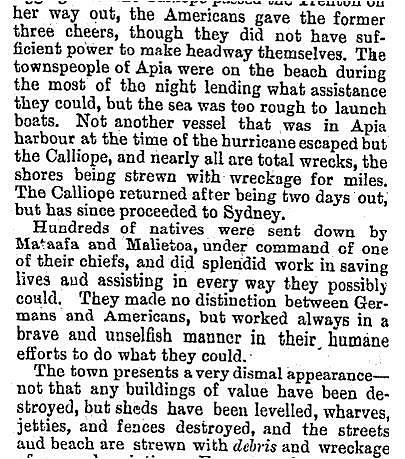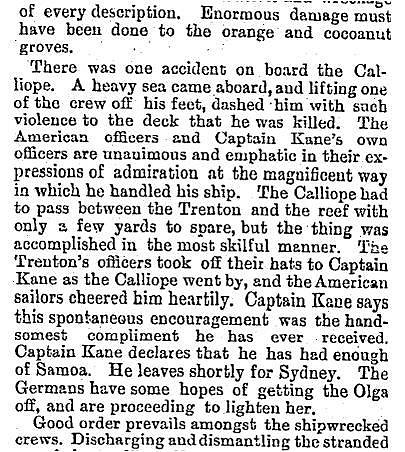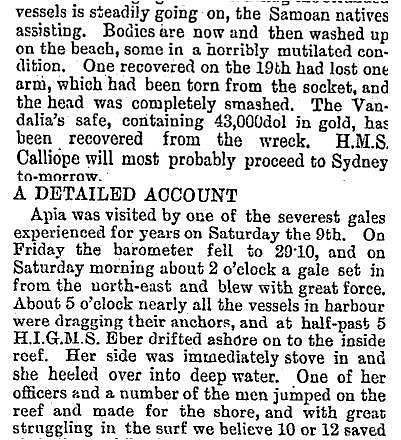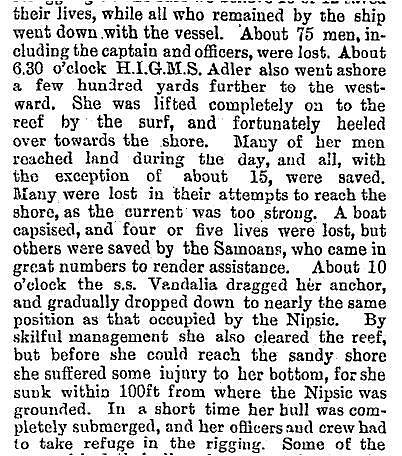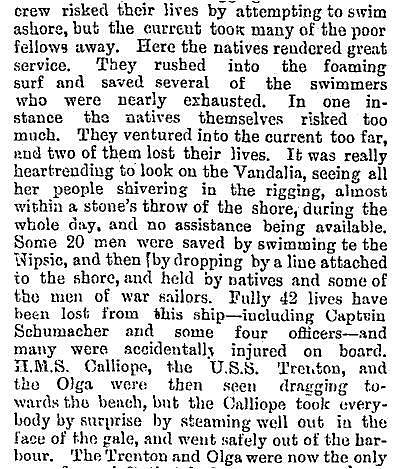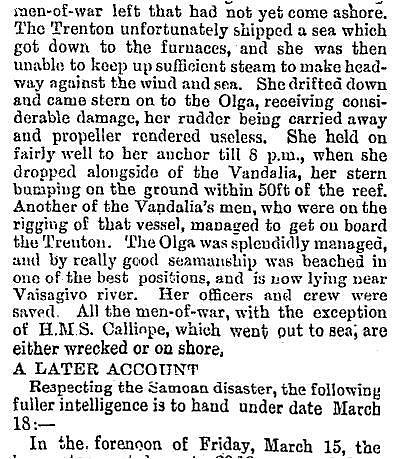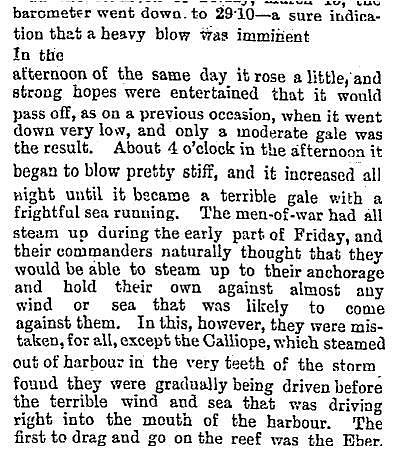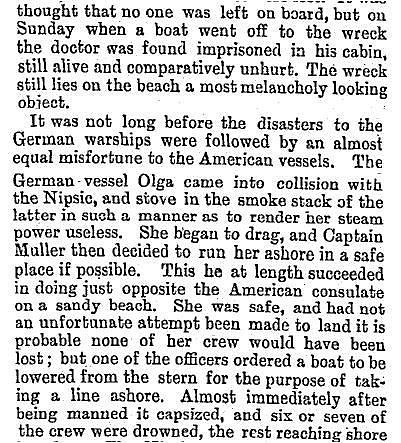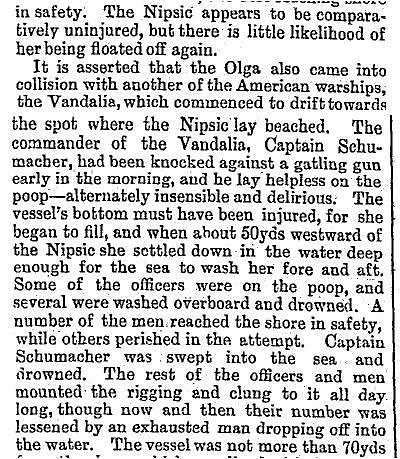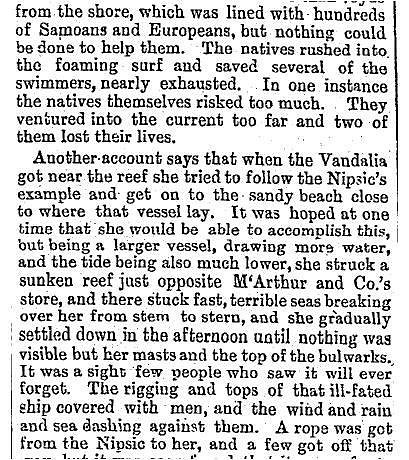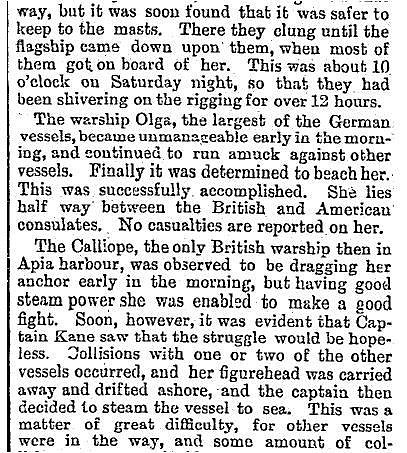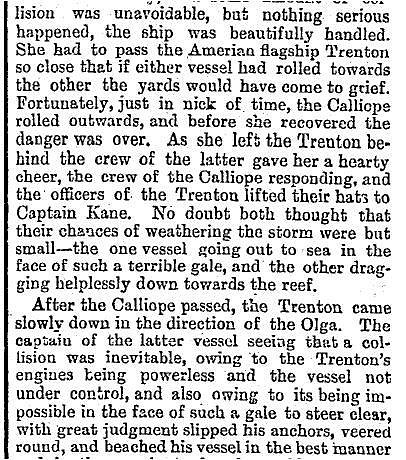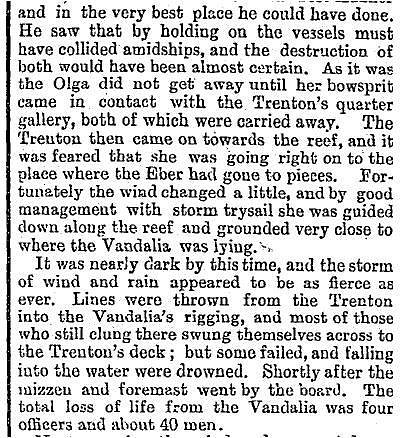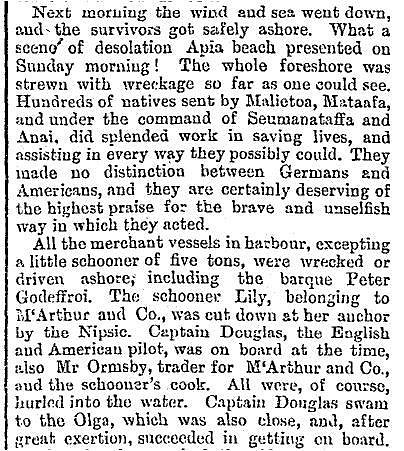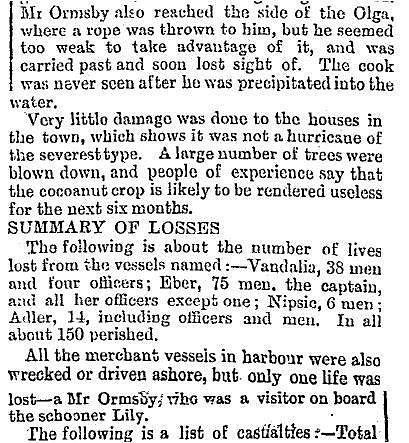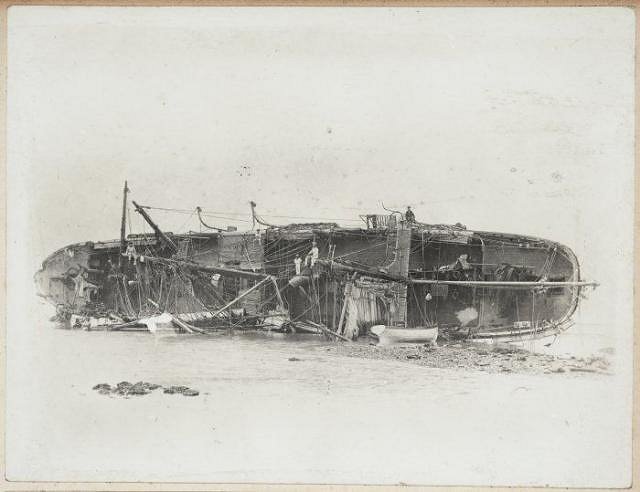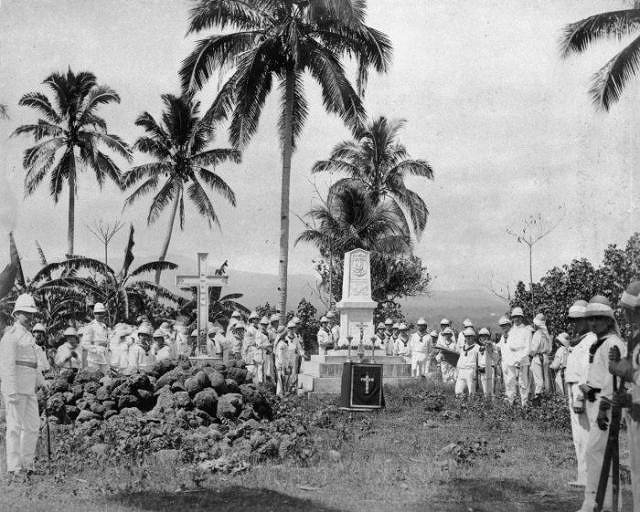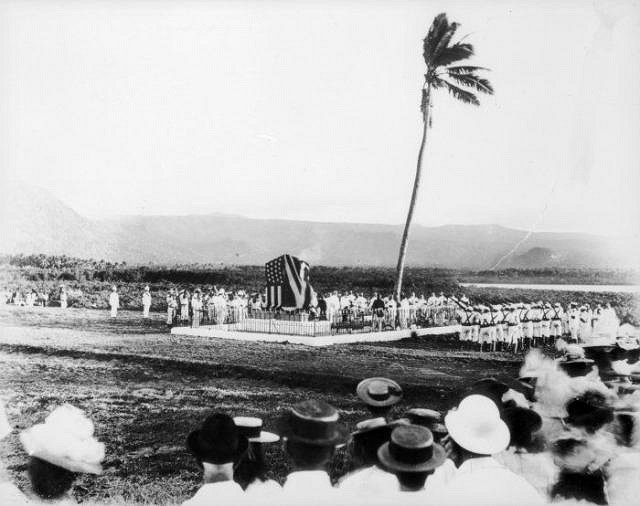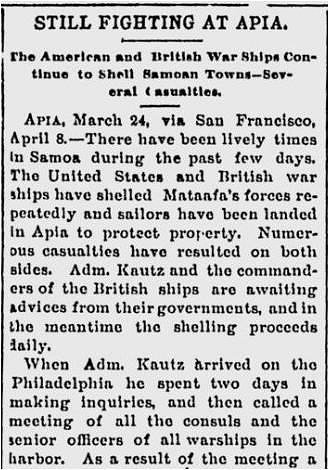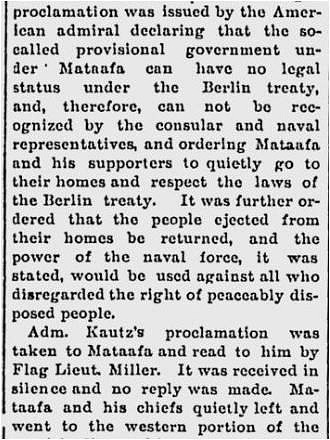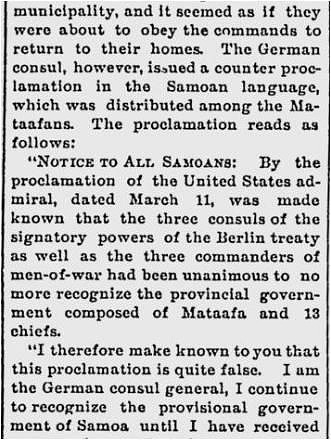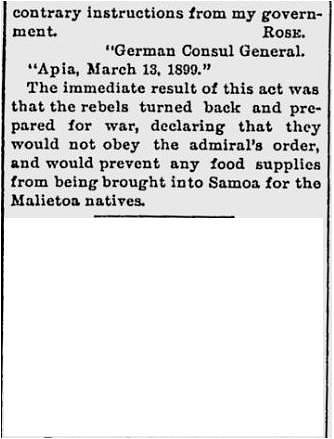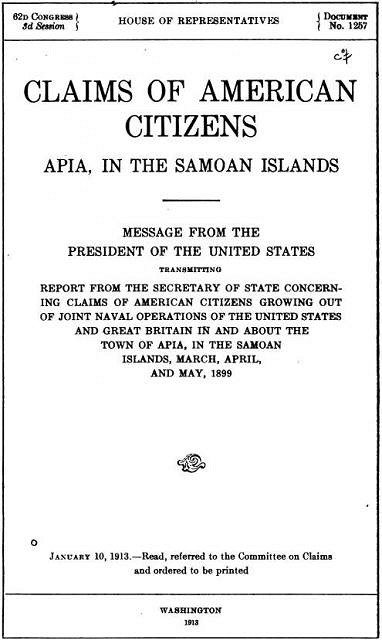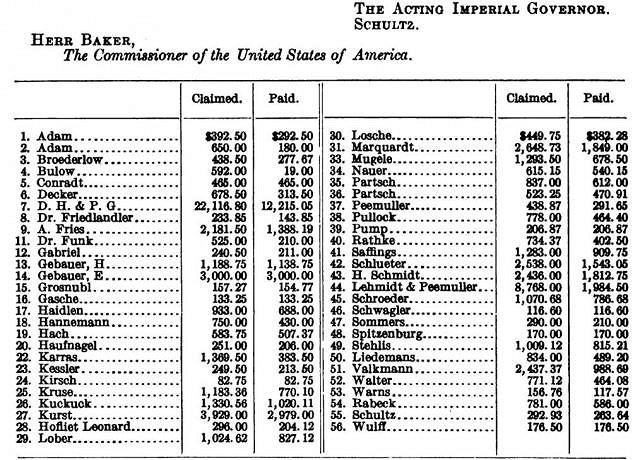Tiki Central / Tiki Drinks and Food / The real Dr. Funk
Post #628964 by TikiTomD on Fri, Mar 16, 2012 9:24 AM
|
T

TikiTomD
Posted
posted
on
Fri, Mar 16, 2012 9:24 AM
Dr. Funk’s time in Samoa was one of simmering tension among the colonial powers (Germany, Great Britain, USA) and also among native Samoan factions primarily split between Malietoa Laupepa and Mata`afa Iosefa, both Samoan royalty, the former backed by the colonial powers and the latter supported by the majority of Samoans as the traditional high chief of all Samoa. At times, the situation broke into open conflict. The Samoan principals in this... **Photograph of Malietoa Laupepa, ca1880s **Photograph of Tamasese Titimaea, ca 1890s **Photograph of Mata'afa Iosefa, ca1890s **Photograph of the first chief [unidentified] killed during the Samoan war, ca1880s Harry Jay Moors, a long-time American businessman in Apia and close friend of Robert Louis Stevenson while he lived in Samoa, wrote a fascinating account, With Stevenson in Samoa, published in 1910, that detailed the close rapport between Stevenson and the native Samoans, particularly with Mata
Stevenson wrote about the Samoan conflict in A Footnote to History - Eight Years of Trouble in Samoa, published in 1895. Jane’s Oceania web site has a top-level Samoan chronological history that helps to decode the confusing succession of native Samoan leaders and civil wars, as well as that of the colonial powers. Returning to Dr. Funk: About a year and a half after he arrived in Samoa, Dr. Funk wrote this letter to the editor in support of actions taken by American and German naval commanders to quell civil disturbances (rare chance for us to see Dr. Funk through his own words)... The Auckland Evening Star August 26, 1881 On March 15-16, 1889, a flotilla of American, German, and British warships was present at Apia, Samoa, protecting national interests during a dispute of sovereignty when a hurricane struck. The USS Trenton, USS Vandalia, and USS Nipsic were driven ashore, with the loss of 50 American lives. Germany lost 96 sailors and three warships, SMS Adler, SMS Olga, and SMS Eber. Those six ships had confronted each other in a tense standoff over several months in Apia Harbor, monitored by the British warship, HMS Calliope, which survived. The disaster undoubtedly overwhelmed Dr. Funk with patients, though it also served to relieve tensions among all factions. Notably, the native Samoans ceased their fighting and did what they could to help rescue American and European sailors, as pointed out in this news article from the National Library of New Zealand... The Otago Daily Times April 1, 1889 **Wrecked German warship HIMS Adler, Apia, Samoa, [1889] **Consecrating the memorial to German sailors, Jan 4 1891, 4 January 1891 **Unveiling of a memorial stone at Mulinu'u, Samoa, [ca 1900] In March and April of 1899, open conflict broke out again in a big way, with the shelling of Apia occurring under orders of an American admiral... The Daily Signal April 8, 1899 (page 1) The American admiral ordered the temporary imprisonment of H.J. Moors, Stevenson’s friend, under suspicion that he was actively supporting Mata`afa. Destruction of homes and property in Apia was widespread, with looting and pillaging by the Samoans accounting for a good bit of it, as people fled the area. After the conflict subsided, citizens of all nationalities made claims for reparations, with German and British residents being paid reasonably promptly from their own respective governments. Germany then made claims against America and Great Britain as co-instigators. Shamefully, the American government failed to take any action at all to address claims of its own citizens until 1913, fourteen years after the event. By then, many of the claimants were deceased or had moved elsewhere. The whole story of this is well and interestingly told by this official document prepared for Congress by the US Secretary of State under direction of President William Henry Taft...
In this document, it is asserted... Near the end of the document is a table of claims paid by the German government to its citizens, transmitted by the German Governor of Samoa, Dr. Schultz, to the Department of State. In the table, we see that Dr. Funk made a claim for damages of $525, but was only paid $210...
-Tom |


